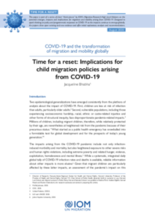Displaying 161 - 170 of 809
For this study, the authors conducted the first nationwide survey to examine whether left-behind children aged 0–6 years old have poor interactions with primary caregivers, and whether school-age children experience higher levels of victimization and emotional distress than their non-left-behind counterparts.
This study aimed to systematically review experimental studies of interventions that promote mental health wellbeing of left-behind children (LBC) in mainland China.
The current study aimed to clarify the relationship between stressful life events and delinquency among left-behind adolescents by examining the moderating roles of resilience and separation duration in this process.
Informed by the family systems theory and the ecological view of well-being, this study aimed to investigate how grandparent–child dyads show reciprocal associations between relationship quality and subjective well-being (SWB) and the extent to which resilience accounts for such reciprocal associations.
This book explores the experiences of children and young people who are migrants.
This paper is part of a series of short “think pieces” by IOM’s Migration Research and Publishing High-Level Advisers on the potential changes, impacts and implications for migration and mobility arising from COVID-19. Designed to spark thinking on policy and programmatic responses to COVID-19 as its impacts continue to emerge globally, the papers draw upon existing and new evidence and offer initial exploratory analysis and recommendations.
The aim of this study was to explore the experiences of unaccompanied refugee minor (URM) girls’ adaptation to life in Norway focusing on their strengths, and to examine the social and structural factors that influence settlement.
Capitalizing on a unique survey in China, the authors of this article aim to study the lasting educational and health consequences of parental migration on children.
This study examined rural children’s well-being, particularly their physical well-being, as functions of parental absence, family economic status, and neighborhood environment.
This qualitative study sought to understand the causes of separation among Syrian families in Jordan and the obstacles to family reunification.


